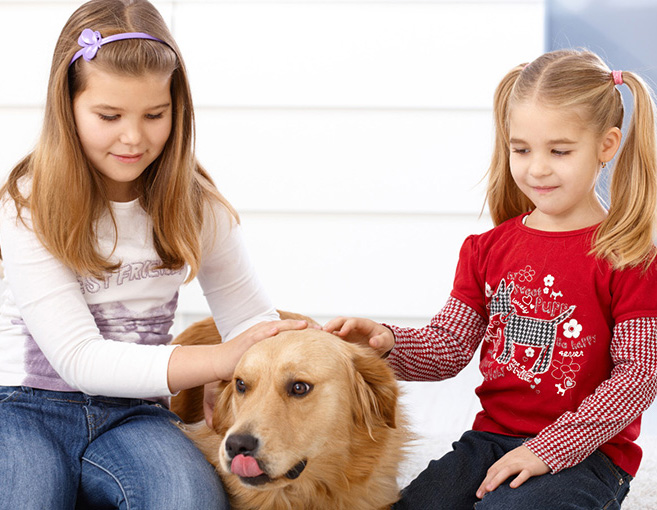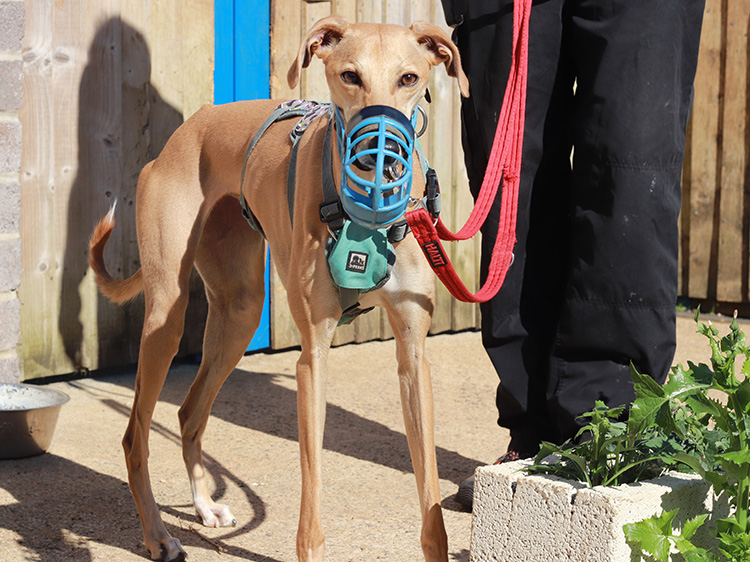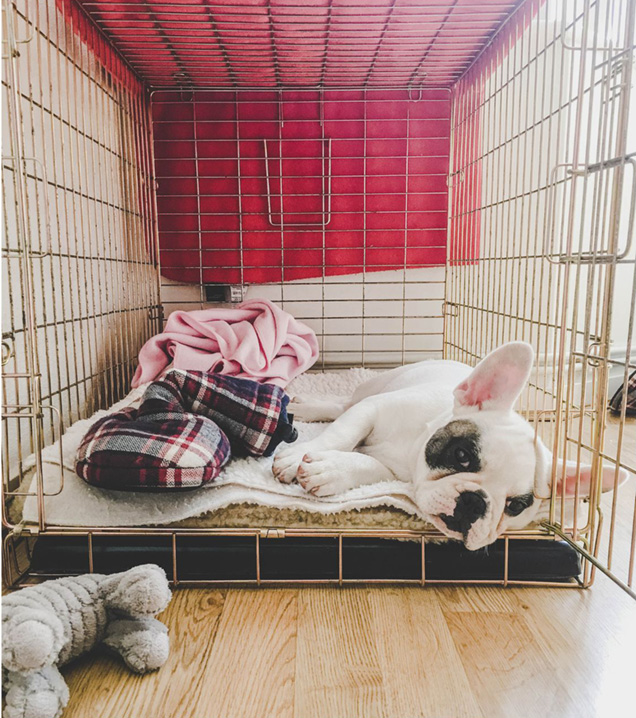Meeting new people can be very stressful for dogs, learn to spot the early signs of anxiety and you can have a calmer, happier dog as you control their space and safety.
A dog will go through the following steps in order to ask someone to move away from them – watch your dog and help them get space from the person if that is what they are asking for firstly by asking the person to stop, or by moving away with your dog.
These steps are called ‘the ladder of aggression’.
STEP ONE Your dog will give out 'calming signals' to try and diffuse the situation and appease the person who they feel is a threat to them. This includes licking lips, yawning, 'whale eye' which is where you see a lot of the whites of the eyes, averting eye contact and turning away. These dogs below, and above, are all showing calming signals and do not wish to be touched.


STEP TWO If calming signals aren't working, your dog will try to move away, or even run away.
STEP THREE Your dog may lie down or sit so they can watch and focus on the threat.
STEP FOUR Freezing – your dog's limbs will stiffen and tense and his eyes will widen
STEP FIVE Your dog may then growl, showing teeth or snapping as a warning.

STEP SIX If still not listened to, your dog may feel it has no other option than to bite. This can range from a small nip to a serious bite. Each dog will display a different level of bite, depending on how threatened they feel in a situation.
Understanding and noticing your dog's body language is vital – if a dog has learnt that their early signals are always ignored, they may move through to the final steps very rapidly.
Helping your dog when out on walks
Previously, there was an assumption that a treat would help a dog to form a bond with a stranger. This method rarely works and can cause a dog to panic further, both wanting the treat and wanting to be far away from the perceived threat. Food should come from you, rather than a stranger, when working with a fearful dog.
Training. Teach your dog to focus on you when they see a new person. This will prevent them from fixating on the stranger. When your dog sees a new person, give them their favourite treat. Over time, this will form an association and your dog will see a new person and to look back to you for food.
We love muzzles! Muzzles are a useful tool, allowing your dog to live a fulfilling life, while staying out of trouble! A few preliminary steps should be taken in order for your dog to feel comfortable wearing a muzzle. » Click here to read more on our muzzle training page.
It's wise to consider muzzle training if your dog can be unpredictable with nipping or biting around new people. No matter how vigilant you are, strangers can appear suddenly, whether that's a jogger cutting across your path or a child running up to your dog.

Helping your dog with visitors to the house
Your dog may ignore or tolerate strangers whilst outdoors and then feel stressed when confronted with a visitor when indoors. A dog's home is their safe space, and it can be frightening when a new person invades their territory. There are several ways to keep your dog calm in these circumstances.
• Make sure your dog has somewhere it can retreat to, such as a crate or a safe room. This can be used for relaxation periods in between training sessions. Your dog can easily become overwhelmed if they can't escape a stressful situation or if a training session goes on too long – and this is when they are more likely to show aggression as a defence mechanism.
• Safety first! If there's any doubt about whether your dog might bite or nip a visitor, then keep them on a lead at all times (your dog, not your visitor!). If ever you cannot supervise your dog, place them in a safe and comfortable room. Make sure they have access to water here too.

It may be kinder to let your dog snooze in their crate or bed, than expect them to meet strangers
• Plan ahead. Consider where your dog will be when the visitor arrives – keep them out of the way to avoid any conflict. How will you control your dog if the visitor needs to leave the room?
• Pair your visitor's arrival with something positive. Your dog will learn to associate a visitor with an extra special treat, such as a stuffed Kong.
• Your dog may find it less stressful to meet a new person whilst outdoors.
• Never tell your dog off. If aggression continues, this will be because their training has moved too fast or there is another source of stress.
• Control your visitor! Ensure the visitor knows their role in your dog’s training.
• Never push your dog to interact with a person. Forcing them to 'make friends' is a human concept, not a canine one.